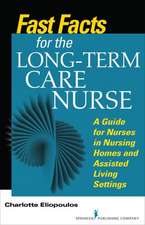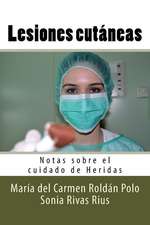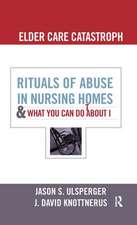Telephone Triage Protocols for Nurses
Autor Julie K Briggs RN, BSN, MHAen Limba Engleză Paperback – 17 iun 2020
This comprehensive manual – a must-have for nurses both new and experienced – offers accurate care recommendations even when client information is limited.
Follow expert direction and make quick, accurate assessments …
- NEWand updated protocolsoffer current best practices and reflect changes in access to medications and health care
- Protocols address adult, pediatric, geriatric, maternal/child, home health concerns, current health issues, and communicable disease outbreaks
- NEWprotocols include arthritis, chronic obstructive pulmonary disease (COPD), elder abuse, stroke symptoms, and Zika virus
- Post-operative conditions and considerations have been added to numerous protocols
- Expanded appendices include altered mental status, PTSD, suicide prevention, and emergency preparedness
- Alpha-organized protocolshelp you quickly locate topics by symptom or condition
- Table of contents by body systemhelps you quickly locate topics by body system, body part or set of related symptoms
- Peer-reviewed by nursing experts
- Easy-to-follow question-asking flow chart – Yes or No answers lead to specific care recommendations
- Ideal guidance for all nurses, particularly those in triage and ambulatory practice
- Sorts life-threatening problemsfrom those not requiring physician or emergency care
- Increases consistencyof advice and documentation
- Nurse Alerts– help the nurse identify potentially life-threatening conditions related to the symptoms and provides additional information to consider when choosing a protocol or triaging the caller’s concern
- Symptoms
alpha-organized
andgrouped
by
level
of
urgency,addressing
injuries,
trauma,
pain,
swelling
and
other
symptoms
for:
- Body part problems
- Body system problems
- Chronic and infectious diseases
- Behavioral problems
- Pediatric-specific problems
- Maternal/obstetric specific problems or conditions
- Sections
under
every
symptom
or
condition
include:
- Key Questionsto ask caller
- Other Protocols to Consider
- Reminder– what to note for proper documentation
- Assessment– Yes or No questions to determine the urgency of symptoms or conditions
- Actions– clear direction following Yes or No answers to questions
- Immediate actions– proven protocols that refer caller to emergency, physician, or at-home care instructions
- Home Care Instructions– comprehensive actions to take before emergency care, before appointment, or at-home care
- Emergency Instructions– in-the-moment first aid
- Report the Following Problems– what caller should tell their personal or ER physician
- Seek Emergency Care Immediately– if certain symptoms occur
- Reminderto determine if caller agrees with the advice provided and if not, reevaluate
- Must-have
resourcefor
medical
offices,
clinics,
schools,
community
referrals,
emergency
departments,
urgent
care
centers,
home
health
agencies
and
managed
healthcare
providers
Julie Briggs, RN, BSN, MHA, has an extensive background in Emergency Nursing, Management, Telephone Triage, Emergency Preparedness, Utilization Review and Quality Management. She is currently providing consulting and training services. She has been employed by Providence Health and Services in Portland, Oregon for the past 15 years in the capacity of Medical Management RN Care Coordinator and as the Manager of the Emergency Department at Providence St. Vincent Medical Center. Additionally, she served in the role of Director for multiple units including the Emergency Department, Critical Care, Cardiac Cath Lab, Ambulatory Care, and Radiology for 13 years at Good Samaritan Medical Center in Puyallup, Washington. She has authored numerous books in Telephone Triage, Emergency Nursing Triage, and Homemaker/Home Health Aide Training.
Preț: 492.88 lei
Preț vechi: 561.80 lei
-12% Nou
94.32€ • 102.42$ • 79.23£
Carte disponibilă
Livrare economică 04-16 aprilie
Specificații
ISBN-10: 197513687X
Pagini: 630
Dimensiuni: 178 x 254 x 34 mm
Greutate: 1.16 kg
Ediția:Sixth
Editura: LWW
Colecția Lww
Descriere
Assess the nature and severity of callers’ symptoms quickly and confidently, with Telephone Triage Protocols for Nurses, 6th Edition. More than 200 alpha-organized protocols address a wide range of symptoms, disorders and medical emergencies, while the flow chart format leads callers to provide vital Yes or No answers to appropriate questions.
This comprehensive manual – a must-have for nurses both new and experienced – offers accurate care recommendations even when client information is limited.
Follow expert direction and make quick, accurate assessments …
- NEW and updated protocols offer current best practices and reflect changes in access to medications and health care
- Protocols address adult, pediatric, geriatric, maternal/child, home health concerns, current health issues, and communicable disease outbreaks
- NEW protocols include arthritis, chronic obstructive pulmonary disease (COPD), elder abuse, stroke symptoms, and Zika virus
- Post-operative conditions and considerations have been added to numerous protocols
- Expanded appendices include altered mental status, PTSD, suicide prevention, and emergency preparedness
- Alpha-organized protocols help you quickly locate topics by symptom or condition
- Table of contents by body system helps you quickly locate topics by body system, body part or set of related symptoms
- Peer-reviewed by nursing experts
- Easy-to-follow question-asking flow chart – Yes or No answers lead to specific care recommendations
- Ideal guidance for all nurses, particularly those in triage and ambulatory practice
- Sorts life-threatening problems from those not requiring physician or emergency care
- Increases consistency of advice and documentation
- Nurse Alerts – help the nurse identify potentially life-threatening conditions related to the symptoms and provides additional information to consider when choosing a protocol or triaging the caller’s concern
- Symptoms alpha-organized and grouped by level of urgency, addressing injuries, trauma, pain, swelling and other symptoms for:
- Body part problems
- Body system problems
- Chronic and infectious diseases
- Behavioral problems
- Pediatric-specific problems
- Maternal/obstetric specific problems or conditions
- Sections under every symptom or condition include:
- Key Questions to ask caller
- Other Protocols to Consider
- Reminder – what to note for proper documentation
- Assessment – Yes or No questions to determine the urgency of symptoms or conditions
- Actions – clear direction following Yes or No answers to questions
- Immediate actions – proven protocols that refer caller to emergency, physician, or at-home care instructions
- Home Care Instructions – comprehensive actions to take before emergency care, before appointment, or at-home care
- Emergency Instructions – in-the-moment first aid
- Report the Following Problems – what caller should tell their personal or ER physician
- Seek Emergency Care Immediately – if certain symptoms occur
- Reminder to determine if caller agrees with the advice provided and if not, reevaluate
- Must-have resource for medical offices, clinics, schools, community referrals, emergency departments, urgent care centers, home health agencies and managed healthcare providers
About the Author
Julie Briggs, RN, BSN, MHA, has an extensive background in Emergency Nursing, Management, Telephone Triage, Emergency Preparedness, Utilization Review and Quality Management. She is currently providing consulting and training services. She has been employed by Providence Health and Services in Portland, Oregon for the past 15 years in the capacity of Medical Management RN Care Coordinator and as the Manager of the Emergency Department at Providence St. Vincent Medical Center. Additionally, she served in the role of Director for multiple units including the Emergency Department, Critical Care, Cardiac Cath Lab, Ambulatory Care, and Radiology for 13 years at Good Samaritan Medical Center in Puyallup, Washington. She has authored numerous books in Telephone Triage, Emergency Nursing Triage, and Homemaker/Home Health Aide Training.





















